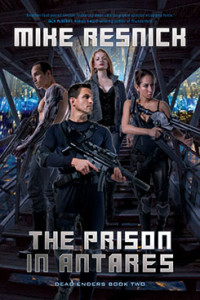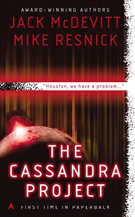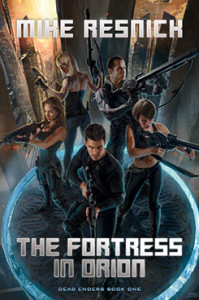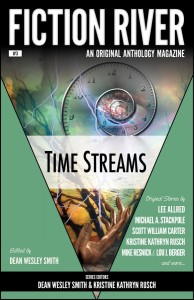Galaxy’s Edge
Mike Resnick, editor
Published bimonthly
paper edition $5.99 Amazon Barnes and Noble
ebook $2.99 direct from publisher Amazon Barnes and Noble
online free
I posted an announcement that this magazine was coming over on my companion blog, but since most of the contents are science fiction, I figured this would be the more appropriate place to review it.
The format is one that we’ve seen before. Stories are posted online for free over the period of an issue. Subscriptions or individual issues are available for purchase. Just off the top of my head, other practitioners of some variation this model include (but may not be limited to) Nightmare, Lightspeed, Clarkesworld, Beneath Ceaseless Skies, and Apex.
That’s pretty good company. So how does Galaxy’s Edge stack up?
Short Answer: Well, it’s edited by Mike Resnick, so how do you think it stacks up? It’s top-notch.
Long Answer: It’s a strong contender for the best debut of the year. While I recognize that the year is young, there isn’t much on the horizon to compete for the title, the exception being Fiction River, which is a different model of publishing all together.
Here’s what you get. There are nine pieces of fiction plus a serial. On top of that, Resnick relates some of the famous, or rather, infamous incidents in science fiction’s history in his entertaining and highly readable style. Barry Malzberg has a column, as do Horace E. Cocroft (on economics as a tool in worldbuilding) and Paul Cook (book reviews). The columns were all interesting, but Resnick’s was by far the most entertaining, although I knew all the stories he told, having heard them over the years.
The fiction is divided between reprints and new stories. The reprints are by Robert J. Sawyer (“The Shoulders of Giants”), Kij Johnson (“Schrodinger’s Cathouse”), Jack McDevitt (“Act of God”), and James Patrick Kelly (“Think Like a Dinosaur”). The original stories are by Nick Di Chario (“Creator of the Cosmos Job Interview Today”), Lou J. Berger (“Just a Second”), Alex Shvartsman (“Requiem for a Druid”), Stephen Leigh (“The Bright Seas of Venus”), and Robert T. Jeschonek (“The Spinach Can’s Son”).
I found the reprints to be a little stronger than the new stories. Or maybe I found the reprints to be more core genre science fiction. The new stories displayed a wider range, including fantasy (Shvartsman) and what I would call slipstream (Jeschonek). As such, some of them fell more towards the edges of my taste range rather than in the center.
All of the stories are professional level, both in execution and concept. I enjoyed them all, even if some of them weren’t quite the sort of thing I’d normally seek out. If Resnick can maintain this level of professionalism along with this diversity, he’s going to have a winner on his hands. It usually takes a few issues for a new venue to discover its editorial voice, even in the case of a well-known editor. I’m eager to see what Galaxy’s Edge is going to look like this time next year.
The serial is part of a novel published in 1961, Dark Universe by Daniel F. Galouye. Now, as a rule, I’m not a fan of serials. I tend to forget little details such the names of many of the supporting characters. This usually results in a great sense of frustration when I pick up the next installment. (For the record, I have the same problem to a lesser extent with novels in series, but since I read the whole novel rather than a portion, it’s easier to remember who’s who among the second stringers.)
Anyway, I decided to give this one a try. In the introduction to the story, Resnick mentions Dark Universe was nominated for a Hugo Award and lost to Stranger in a Strange Land by only two votes. It’s very much a product of its time, and that’s not a bad thing. This is science fiction extrapolated from what at the time were current trends. Maybe I’m not reading in the right places, but I haven’t seen much of this type of thing in a while, and most of what I have hasn’t been logical extrapolation so much as political tracts.
The setup is the far future, where the remnants of humanity have hidden in caves to escape the fallout from a nuclear war. They’ve been down there so long that most of them have gone blind, although some seem to have developed the ability to see in the infrared. Most of the people have highly developed hearing, to the point that they use echolocation just like bats. An elaborate society has evolved with its own legends and beliefs as well as expressions and figures of speech that invoke hearing rather than sight. There are two groups of humans in the caverns, and they depend on hot springs to survive. Only the springs are drying up. If that weren’t enough, there’s a monster on the loose.
I don’t know how many parts this serial will run, but I enjoyed it more than I expected to. The setup has been logically thought out, with enough details given that the reader has to put some of the pieces together. That was half the fun. I am looking forward to the rest of it.
The stories are free and available here at the Galaxy’s Edge website. Check them out. And if you like what you see, consider getting a subscription. Authors deserve to be paid if they do their jobs and entertain you. A year’s worth of issues is only $9.99. That will go a long way to guaranteeing there will be more issues to come.
 The Prison in Antares
The Prison in Antares



